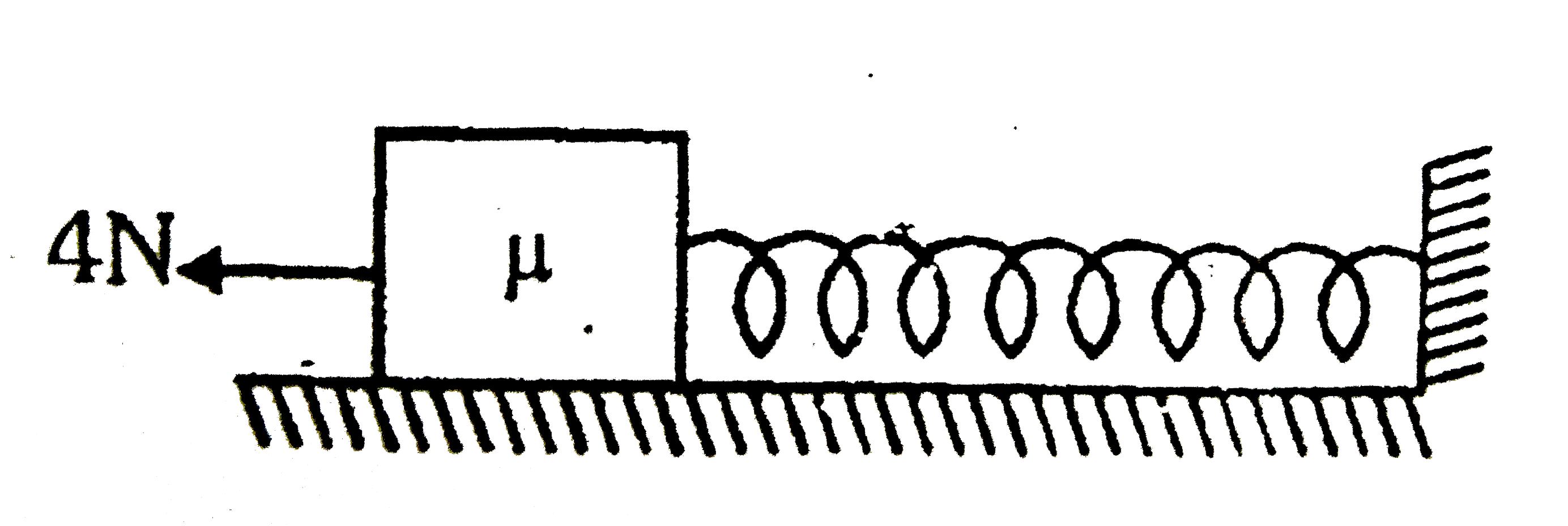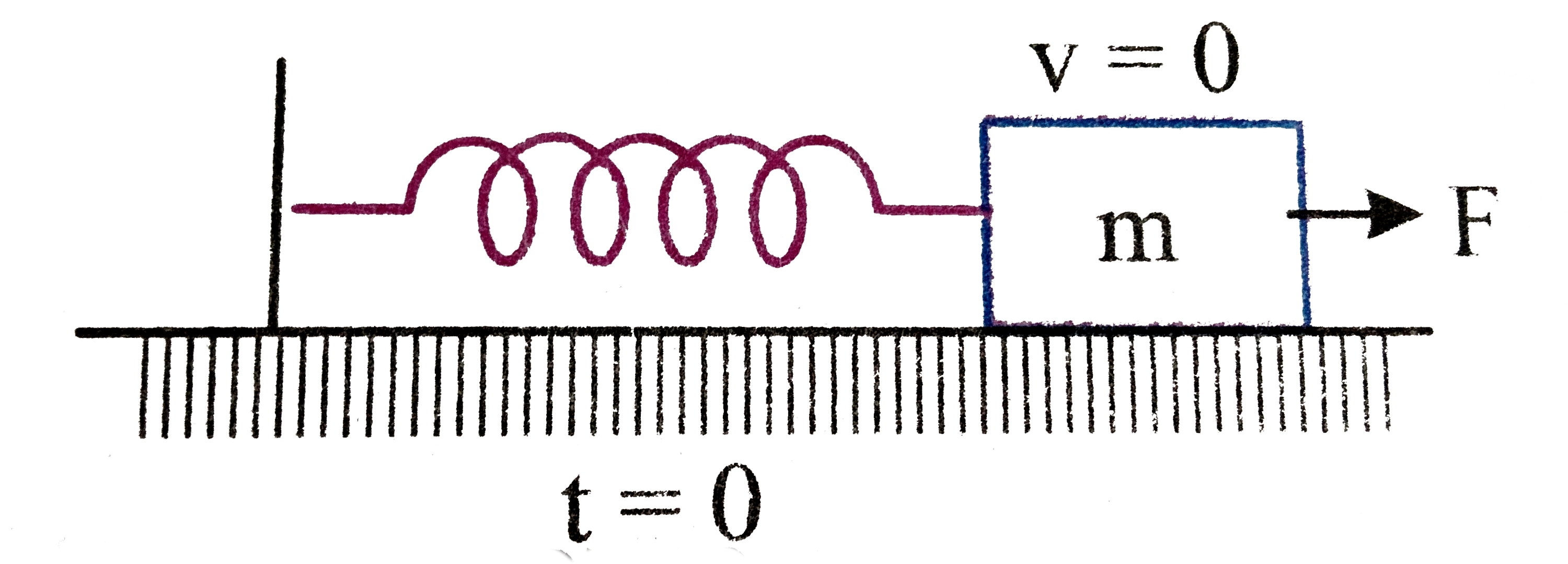At t=0, a constant force is applied on 3kg block. Find out maximum elongation in spring in cm.

The correct Answer is:8cm
Given system can be reduce by using reduced mass concept μ=2×32+3=65kg
and Freduced= force on any block w.r.t. centre of mass =m1F2+m2F1m1+m2=2×10+3×02+3=4N
12kx2=4x⇒x=8k=8100=8×10−2m=8cm

Topper's Solved these Questions
- CENTRE OF MASSBook:ALLENChapter:CENTRE OF MASSExercise:EXERCISE-I
Explore 40 Videos
- CENTRE OF MASSBook:ALLENChapter:CENTRE OF MASSExercise:EXERCISE-II
Explore 43 Videos
- BASIC MATHEMATICS USED IN PHYSICS &VECTORS Book:ALLENChapter:BASIC MATHEMATICS USED IN PHYSICS &VECTORS Exercise:EXERCISE-IV ASSERTION & REASON
Explore 11 Videos
- ELASTICITY, SURFACE TENSION AND FLUID MECHANICSBook:ALLENChapter:ELASTICITY, SURFACE TENSION AND FLUID MECHANICSExercise:Exercise 5 B (Integer Type Questions)
Explore 3 Videos
Similar Questions
Cionsider the situation of the previous problem. Suppose each of tbe blocks is pulled by a constant foerce F instead of any impulse. Find the maximum elongation that the spring will suffer and the distancews moved by the two blocks in the process.
View SolutionTwo blocks of mass m1andm2 are connected by a spring of force constant k. Block of mass m1 os pulled by a constant force f2 [see fig 4E.19 (a)] find the maximum elongation in the spring .

View Solution
Knowledge Check
A block of mass 1kg is connected with a massless spring of force constant 100N/m. At t=0, a constant force F=10N is applied on the block. The spring is in its netural length at t=0. The speed of particel at x=6cm form mean position is
 A4cm/sB10cm/sC80cm/sD50cm/s
A4cm/sB10cm/sC80cm/sD50cm/s
Two blocks of masses m and M connected by a spring are placed on frictionless horizontal ground. When the spring is relaxed, a constant force F is applied as shown. Find maximum extension of the spring during subsequent motion.

View SolutionA block of mass 1kg is connected with massless spring of constant 100N/m .At t=0 ,a constant force F=10N is applied on the block. The spring is in its natural length at t=0.The speed of particle at x=6cm form mean position is
View Solutionconsider the situastion of the previous problem. Suppose the block of mass m1 is pulled by a constant force F1 and the other block is pulled by a constant force F2. Find the maximum elongation that the spring will suffer.
View SolutionInitially block shown is at rest and the spring is unstretched, when a constant force F begins to act on it neglect friction. Find

maximum extension in the spring
View SolutionA block of mass m fitted with a light spring of stiffness k and natural length l0 kept on a smooth radial groove made on a disc rotaing with a constant angular axis . If the block is released slowly . Find the maximum elongation of the spring

View SolutionA block of mass 5kg having charge q is attached to a spring of constant K=104N/m. A charge −q is placed below the block at separation 0.5m. If the maximum elongation of spring is 0.5m. If the maximum elongation of spring is 0.1m, find q. Assume the initial elongation of spring is zero.
View SolutionIn the situation shown in figure all contact surfaces are smooth. The force constant of the spring is K. Two forces F are applied as shown. The maximum elongation produced in the spring is how many times of F/K (initially the spring is relaxed)?

View Solution